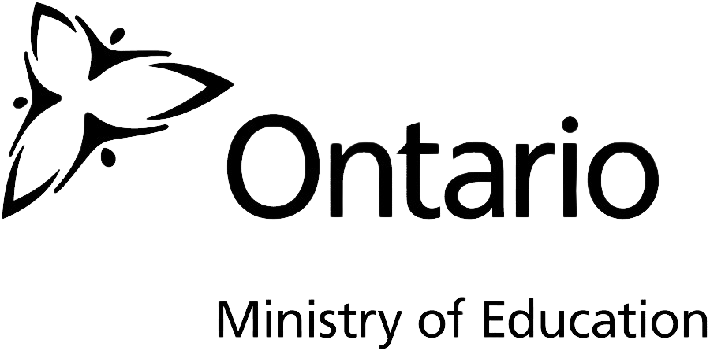Are you tired of cumbersome and time-consuming educator recruitment and onboarding processes? Do you find it challenging to attract and retain top talent in your global education institution? Look no further! In this article, we will delve into how technology is revolutionizing the recruitment and onboarding process for global educators, saving time and resources while ensuring a seamless experience for educators joining your institution.
From automating applicant tracking and scheduling interviews to streamlining the onboarding process, technology offers innovative solutions that can streamline recruitment efficiency and transform onboarding into a smooth and efficient experience.
Join us as we uncover the benefits of leveraging technology in the recruitment and onboarding process for global educators. Discover how you can leverage tech to attract, hire, and onboard top talent efficiently, ultimately enhancing the quality of education in your institution.
Key Takeaways:
- Technology is revolutionizing the recruitment and onboarding process for global educators.
- Automated applicant tracking and onboarding software can streamline recruitment efficiency.
- Using technology in onboarding ensures a seamless experience for educators joining global education institutions.
- Streamlined recruitment and onboarding save time and resources.
- Leveraging technology enhances the overall quality of education in global education institutions.
Global Educators: Your Untapped Competitive Advantage in Today’s World
Global educators possess a unique set of skills and perspectives that can give them a significant competitive advantage in today’s ever-changing world. As the global workforce continues to expand and become more diverse, the demand for individuals with cross-cultural skills, adaptability, and a global perspective is on the rise.
The Value of Global Educators in a Changing World
Global educators bring valuable expertise to the table, including:
- Cross-cultural skills: Global educators have experience working with individuals from different cultures and backgrounds, allowing them to navigate diverse environments with ease.
- Global perspective: These educators have a deeper understanding of global issues and can provide students with a broader worldview.
- Intercultural communication: Global educators excel in communicating effectively across cultures, fostering understanding and collaboration.
- Adaptability: With experience in different educational systems and environments, global educators are highly adaptable and can thrive in various contexts.
- Cultural intelligence: They possess a high level of cultural intelligence, enabling them to bridge cultural gaps and promote inclusivity.
- Language skills: Fluent in multiple languages, global educators can facilitate effective communication and language learning in diverse classrooms.
These skills and perspectives enable global educators to guide students in developing the necessary competencies to succeed in a rapidly changing world. By providing students with exposure to diverse cultures, global educators play an essential role in fostering tolerance, empathy, and a global mindset.
To harness the potential of global educators and transform it into a competitive advantage, educational institutions need to recognize the significance of investing in their recruitment, professional development, and integration into the school community. By leveraging the unique skills and perspectives of global educators, schools can offer a truly international education experience and prepare their students for success in the global workforce.
Unlocking Global Talent: How Tech Streamlines Recruitment & Onboarding
The Role of Technology in Streamlining Recruitment
Technology plays a pivotal role in revolutionizing the recruitment process, enabling organizations to tap into a vast pool of global talent. From candidate sourcing to applicant tracking and interview scheduling, technology has streamlined and automated various aspects of recruitment, saving time and enhancing efficiency.
Recruitment automation tools, such as applicant tracking systems (ATS), have simplified the candidate sourcing process, allowing recruiters to efficiently search, filter, and manage high volumes of applications. These systems also enable recruiters to create job postings and distribute them across multiple platforms, reaching diverse talent pools across the globe.
Candidate screening has been significantly streamlined through the use of technology. Automated screening tools can quickly analyze and evaluate candidate resumes, matching them with specific job requirements and qualifications. By eliminating manual screening processes, recruiters can focus their efforts on engaging with the most suitable candidates.
Moreover, technology has transformed interview scheduling, reducing the administrative burden and enabling recruiters to efficiently coordinate multiple interviews. With the aid of scheduling software, recruiters can effortlessly manage interview slots, send automated reminders, and ensure a smooth and organized interview process.
The Benefits of Using Technology in Onboarding
When it comes to onboarding new hires, technology has revolutionized the way organizations welcome and integrate talent into their teams. Onboarding software and automation tools have streamline the onboarding process, improving efficiency and enhancing the overall experience for new hires.
Onboarding automation tools enable organizations to create personalized onboarding workflows, automate administrative tasks, and provide new hires with a seamless digital onboarding experience. This streamlined onboarding process ensures that new hires have access to all necessary information, training materials, and resources from day one, allowing them to hit the ground running and quickly integrate into their roles.
Furthermore, technology facilitates smoother new hire orientation with digital resources and interactive platforms. Through online training modules and virtual orientations, organizations can provide comprehensive and standardized onboarding, ensuring consistent information delivery across different locations and departments. This approach fosters a sense of belonging and accelerates the assimilation of new hires into the organizational culture.
In summary, technology has become an indispensable tool in unlocking global talent and streamlining the recruitment and onboarding process. By leveraging technology-driven solutions, organizations can enhance their recruitment efficiency, attract top global talent, and ensure a seamless transition for new hires.
Bridging Language & Cultural Barriers: Seamless Onboarding for Global Success

In today’s globalized workplace, organizations face the challenge of onboarding employees from diverse cultural and linguistic backgrounds. Language barriers and cultural differences can hinder effective communication and integration, leading to misunderstandings and inefficiency. However, with the right strategies and tools, these barriers can be overcome, paving the way for seamless onboarding and global success.
Overcoming Language Barriers in the Onboarding Process
Language barriers can significantly impact the onboarding process, making it difficult for employees to navigate their new roles and responsibilities. To address this challenge, organizations can implement language training programs that help employees improve their language proficiency.
Language training equips employees with the necessary skills to communicate effectively in multicultural work environments. It enhances their ability to understand and be understood, fostering clear and concise communication. By investing in language training, organizations can ensure that language barriers do not hinder the onboarding process and create a more inclusive workplace.
Furthermore, organizations can also leverage translation services and language support to bridge the language gap. These services facilitate the translation of important documents, policies, and procedures, ensuring that employees have access to relevant information in their native language. Language support can also include providing language resources and assistance, such as bilingual colleagues or interpreters, to help employees overcome language challenges during the onboarding process.
Navigating Cultural Differences during Onboarding
Cultural differences can pose challenges during the onboarding process, as employees from different cultural backgrounds may have varying expectations, values, and norms. To navigate these differences and promote cultural integration, organizations can provide cultural sensitivity training and promote cross-cultural awareness.
Cultural sensitivity training equips employees with the knowledge and understanding of different cultural practices and norms. It helps them develop empathy, respect, and appreciation for diverse cultures, fostering an inclusive and harmonious work environment. During the onboarding process, cultural sensitivity training can include educating employees about cultural differences, promoting cultural integration, and providing guidance on navigating cross-cultural communication effectively.
In addition to training, organizations can also facilitate intercultural communication by encouraging open dialogue and creating opportunities for employees to share their experiences and perspectives. Building cross-cultural awareness allows employees to learn from each other, foster collaboration, and cultivate a sense of belonging in the workplace.
| Strategies to Bridge Language Barriers | Strategies to Navigate Cultural Differences | |
|---|---|---|
| Language Training | – Implement language training programs to improve language proficiency. | |
| Translation Services | – Provide access to translation services for important documents and information. | |
| Language Support | – Offer language resources and assistance, such as bilingual colleagues or interpreters. | |
| Cultural Sensitivity Training | – Provide cultural sensitivity training to promote understanding and respect for diverse cultures. | |
| Cross-Cultural Awareness | – Foster cross-cultural awareness through open dialogue and sharing of experiences. |
Are You Ready for the Shift? Preparing Your School for a Globalized Workforce
In today’s rapidly evolving world, the concept of work is undergoing profound changes. The future of work is heavily influenced by globalization, technological advancements, and shifting economic landscapes. As educational institutions, it is imperative that we acknowledge these changes and take proactive steps to prepare our schools and students for a globalized workforce.
The Impact of Globalization on Education
Globalization has transformed various aspects of our lives, including education. It has opened up new opportunities for collaboration, knowledge exchange, and cultural integration. Educational institutions now have the responsibility to equip students with the necessary skills and competencies to thrive in a globalized world.
Through globalization, the world has become interconnected, creating a need for individuals who possess a global mindset, cross-cultural communication skills, and a deep understanding of global issues. A globalized workforce requires employees who can adapt to diverse environments, work effectively across borders, and contribute to international collaborations.
Preparing Educational Institutions for a Globalized Workforce
To prepare our schools for a globalized workforce, curriculum development plays a crucial role. It is essential to incorporate global awareness, global citizenship, and global competency into the curriculum. By integrating these elements, educational institutions can foster cultural understanding, promote diversity, and develop students’ skills and knowledge needed for success in a globalized world.
International partnerships and cultural exchange programs are also vital in preparing students for the global workforce. Collaborating with educational institutions from different countries provides opportunities for students to engage in cross-cultural experiences, gain international perspectives, and develop a global mindset. These partnerships can also lead to the exchange of best practices in curriculum development, teaching methodologies, and research collaborations.
In the pursuit of preparing students for a globalized workforce, it is essential for educational institutions to establish a global competency framework. This framework outlines the skills, knowledge, and attitudes necessary for global competence, providing a roadmap for educators to design learning experiences that promote global competency development.
| Strategies for Preparing Educational Institutions | Benefits |
|---|---|
| Integrate global awareness and global citizenship into the curriculum | – Foster cultural understanding – Promote diversity – Develop global competence |
| Establish international partnerships and cultural exchange programs | – Provide cross-cultural experiences – Gain international perspectives – Exchange best practices |
| Create a global competency framework | – Provide a roadmap for global competence – Guide curriculum development and teaching methodologies |
Connect & Collaborate: Building Your School’s Global Impact Network
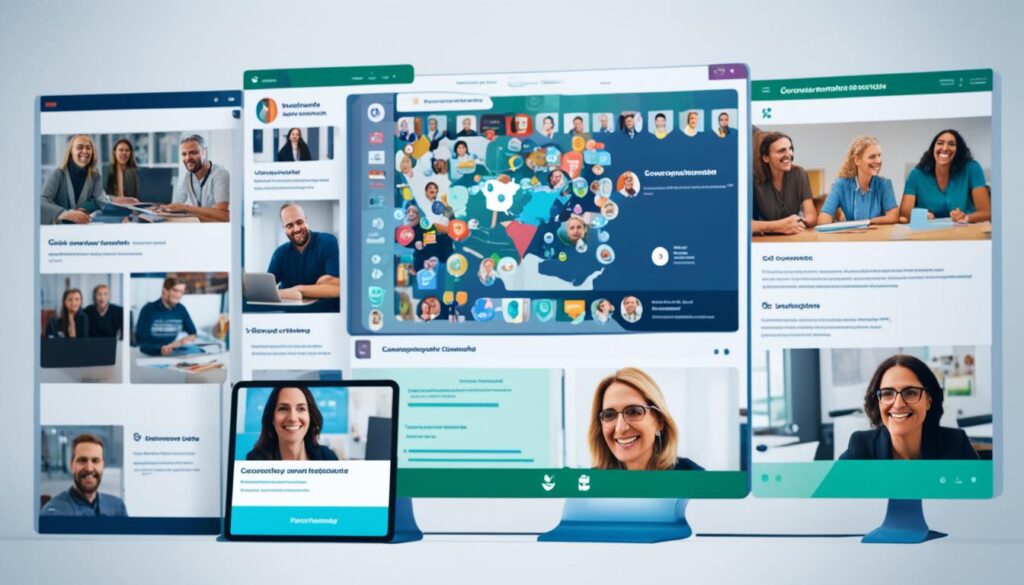
The Power of Global Collaboration in Education
In today’s interconnected world, global collaboration is essential for schools to thrive and make a lasting impact. By engaging in global collaboration, educational institutions can tap into a wealth of knowledge, resources, and diverse perspectives. This fosters a dynamic learning environment that prepares students for the challenges and opportunities of a rapidly changing global landscape.
Global collaboration in education goes beyond traditional boundaries, allowing educators and students to connect with peers from around the world. Through educational networks, online collaboration platforms, and virtual classrooms, schools can break down geographical barriers and create opportunities for knowledge sharing, peer learning, and collaborative projects.
Building a Global Impact Network for Your School
Building a strong global impact network requires intentional efforts and strategic partnerships. By establishing global partnerships, schools can strengthen their educational programs, exchange best practices, and enhance professional development opportunities for educators.
Participating in educational networks and professional development programs enables schools to engage in knowledge exchange, collaborative projects, and peer learning with like-minded institutions globally. This opens up new avenues for innovation, cultural exchange, and the development of global perspectives among students and educators.
To ensure the success of your school’s global impact network, it is crucial to leverage online collaboration platforms that facilitate seamless communication, project management, and knowledge sharing. These platforms enable educators and students to collaborate effectively on global projects, making the most of the diverse perspectives and expertise within the network.
By connecting and collaborating globally, schools can empower their students, broaden their horizons, and create a positive and lasting impact on education worldwide.
From Textbooks to Real-World: Industry Partnerships Powering Global Learning

In today’s rapidly changing world, traditional classroom learning alone is no longer sufficient to prepare students for successful careers. To bridge the gap between education and real-world skills, industry partnerships have emerged as a powerful tool in powering global learning. These partnerships provide invaluable opportunities for students to engage in experiential and real-world learning, preparing them for the demands of the modern workforce.
The Benefits of Industry Partnerships in Education
Industry partnerships offer a plethora of benefits for both educational institutions and students:
- Experiential Learning Opportunities: Partnering with industries exposes students to real-life scenarios and challenges, allowing them to apply theoretical concepts in practical settings. This hands-on experience enhances their learning and develops critical skills.
- Skill Development: Collaboration with industries provides students with the opportunity to acquire industry-specific skills that are in high-demand. They can gain practical knowledge and develop competencies necessary for their future careers.
- Career Readiness: Industry partnerships enable students to build connections and network with professionals in their field of interest. This networking opportunity can lead to internships, job placements, and mentorship, thereby enhancing their career readiness and employability.
- Curriculum Integration: Integrating industry-relevant content into the curriculum helps students understand the practical applications of what they learn. This integration aligns education with industry needs, making graduates more job-ready and adaptable.
Implementing Industry Partnerships in Your Educational Institution
To effectively implement industry partnerships in your educational institution, consider the following strategies:
- Establishing Partnerships: Identify potential industry partners who align with your institution’s goals and values. Reach out to industry professionals, organizations, and local businesses to explore collaboration opportunities.
- Designing Internship Programs: Create structured internship programs that provide students with hands-on experience in their chosen industry. Collaborate with industry partners to design meaningful internships that integrate classroom learning with real-world challenges.
- Integrating Industry-Relevant Curriculum: Work closely with industry partners to develop curriculum content that reflects current industry trends and demands. Incorporate case studies, guest lectures, and industry projects to provide students with practical learning experiences.
- Networking Opportunities: Organize networking events, job fairs, and industry visits to facilitate student-industry interactions. Encourage students to participate in industry conferences, seminars, and workshops to expand their professional networks.
By embracing industry partnerships and integrating real-world learning experiences into education, your institution can empower students to become well-rounded, career-ready individuals with the skills needed to thrive in today’s global workforce.
Technology as Your Global Collaboration Bridge: Tools for Streamlined Success
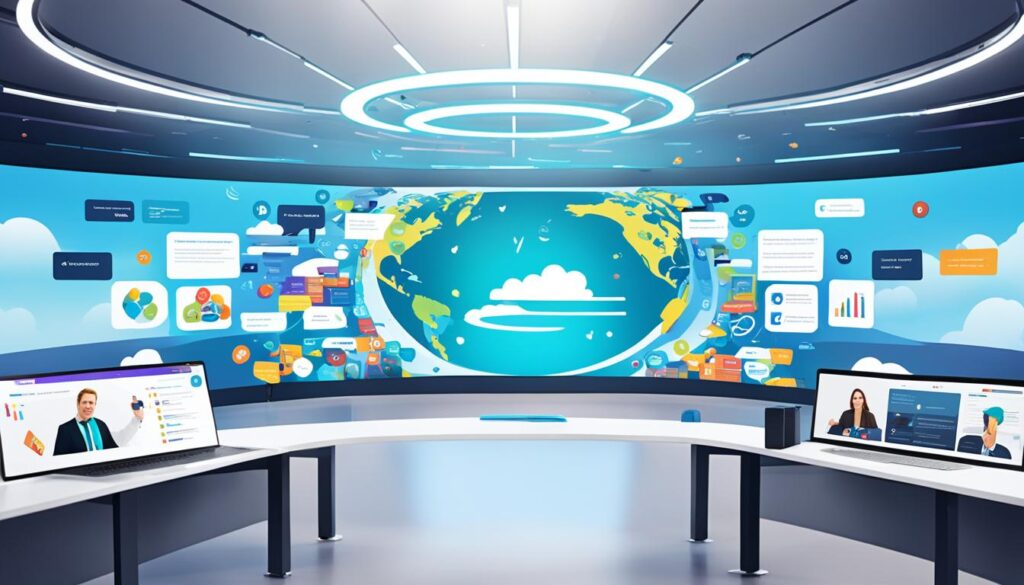
In today’s interconnected world, technology plays a crucial role in facilitating global collaboration in education. It serves as a bridge that connects educators and learners from diverse backgrounds, enabling seamless communication and collaboration regardless of geographical barriers. By leveraging the power of technology, educational institutions can unlock the full potential of virtual collaboration and streamline their collaborative efforts for enhanced productivity and success.
The Role of Technology in Global Collaboration
Technology has revolutionized the way educators collaborate and communicate with each other, transcending physical limitations and creating a truly global learning environment. Virtual collaboration tools, such as video conferencing, project management software, and communication platforms, enable educators to connect and share knowledge with ease. These tools allow for real-time communication, file sharing, and collaborative project management, fostering a sense of connectedness and enabling seamless collaboration across borders.
Essential Tools for Streamlined Global Collaboration
When it comes to global collaboration, having the right tools at your disposal is essential. Here are some of the key technology-enabled tools that can streamline your global collaboration efforts:
- Video Conferencing Tools: Video conferencing tools, like Zoom and Microsoft Teams, enable face-to-face communication and virtual meetings, allowing educators to connect and collaborate from anywhere in the world.
- Project Management Software: Tools like Trello and Asana help teams manage projects, assign tasks, track progress, and foster collaboration, making it easier to work on shared goals and deliverables.
- Communication Platforms: Messaging and collaboration platforms, such as Slack and Microsoft Teams, provide a centralized space for educators to communicate, share updates, and collaborate in real-time.
- File Sharing Platforms: Platforms like Google Drive and Dropbox facilitate seamless file sharing and collaboration, enabling educators to access and work on shared documents, presentations, and resources.
By leveraging these virtual collaboration tools, educational institutions can create an environment that transcends physical boundaries and empowers educators to collaborate effectively, share knowledge, and work towards a common goal.
The image depicts a collage of virtual collaboration tools, representing the diverse range of technology-enabled solutions available for streamlined global collaboration.
3 Steps to Building Mutually Beneficial & Impactful Educational Partnerships
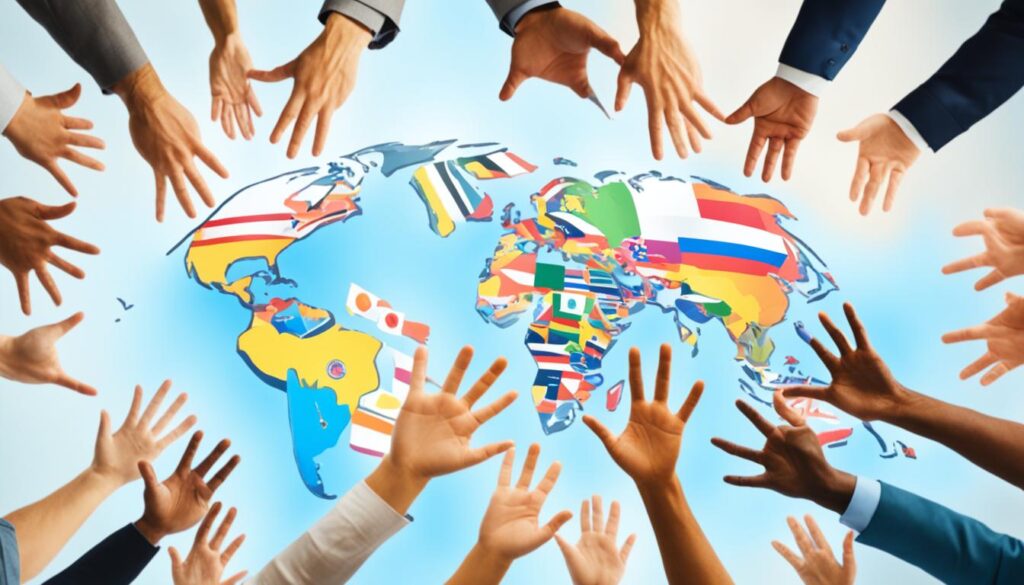
Building strong educational partnerships is essential for driving positive change and fostering social impact. By collaborating with complementary organizations that share similar goals, educational institutions can create mutually beneficial partnerships that promote sustainability and achieve shared outcomes. In this section, we will explore a three-step process to help you build impactful educational partnerships.
Step 1: Identifying Potential Educational Partnerships
To start the partnership development process, it is crucial to identify potential organizations that align with your institution’s mission and values. Look for organizations that complement your programs and can contribute unique resources or expertise. Consider factors such as educational focus, geographical location, and shared goals.
One valuable approach is to explore partnership opportunities through educational networks or associations. These platforms connect institutions worldwide, fostering collaboration and knowledge sharing. Take advantage of such networks to discover like-minded organizations that can enrich your educational programs and initiatives.
Step 2: Building and Nurturing Educational Partnerships
Once you’ve identified potential partners, the next step is to build and nurture the partnerships. This involves relationship-building and effective communication to establish trust and mutual understanding.
Start by initiating conversations and exploring shared interests and goals. Identify areas where you can collaborate and develop projects or programs that align with both organizations’ objectives. By working together on collaborative projects, you can create shared value and maximize your social impact.
Effective communication is key throughout the partnership development process. Maintain regular communication channels and ensure transparency in decision-making. By fostering open and honest dialogue, you can build a strong foundation for the partnership and address any challenges that arise.
Step 3: Measuring the Impact of Educational Partnerships
Measuring the impact of your educational partnerships is crucial to ensure their effectiveness and identify areas for improvement. Implement an impact assessment framework that evaluates the outcomes and benefits of the partnership.
Establish clear metrics and goals at the beginning of the partnership to track progress and measure success. Regularly assess and evaluate the partnership’s impact on both organizations and the communities they serve.
Consider conducting surveys, collecting data, and gathering feedback from stakeholders to gain insight into the partnership’s value and social impact. Use this information to make informed decisions and continuously improve the partnership’s outcomes over time.
By following these three steps – identifying potential partnerships, building and nurturing relationships, and measuring impact – you can create mutually beneficial and impactful educational partnerships that drive positive change and foster sustainability. Embrace the power of collaboration and unleash the potential of partnerships to transform the global education landscape.
Sustainable Partnerships: The Key to Long-Term Global Impact
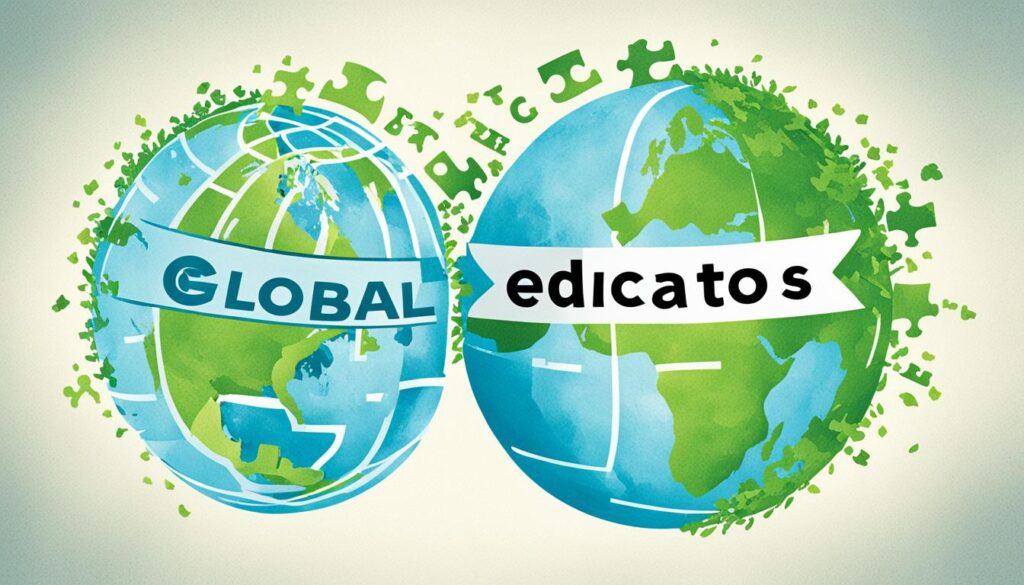
In order to achieve long-term global impact in education, sustainable partnerships play a crucial role. These partnerships go beyond short-term collaborations and focus on creating lasting and meaningful relationships. By fostering partnership sustainability and continuous improvement, educational institutions can maximize their impact and create positive change in the global education landscape.
The Importance of Sustainable Partnerships in Education
Sustainable partnerships are essential for driving long-term impact in education. They enable educational institutions to work towards a shared vision and leverage their collective strengths and resources. By establishing partnerships based on shared values and a common goal, institutions can collaborate effectively to address complex challenges and create innovative solutions.
Furthermore, sustainable partnerships promote scalability and partnership longevity. They provide a foundation for ongoing collaboration and enable educational institutions to expand their reach and influence. Through sustained efforts and resource allocation, these partnerships can have a significant socio-economic impact, transforming the lives of students and communities.
Strategies for Maintaining and Strengthening Sustainable Partnerships
Building sustainable partnerships requires intentional relationship building and continuous collaboration. Here are some strategies to help educational institutions maintain and strengthen their partnerships:
- Effective Relationship Building: Focus on building trust, understanding, and mutual respect with your partner organizations. Invest time in getting to know each other’s values, goals, and areas of expertise.
- Ongoing Collaboration: Develop a culture of collaboration by regularly engaging in joint projects, workshops, and events. Encourage open communication and foster a spirit of shared learning and innovation.
- Impact Measurement: Establish mechanisms to measure the impact of your partnership efforts. Collect data, conduct evaluations, and assess the outcomes and effectiveness of collaborative initiatives.
- Continuous Improvement: Embrace a mindset of continuous improvement by identifying areas for growth and innovation within your partnership. Regularly evaluate and refine your partnership strategy to ensure it remains relevant and impactful.
- Resource Allocation: Allocate adequate resources, both financial and human, to support the sustainability of your partnership. Ensure that there is a balance of contributions and benefits from both parties.
By adopting these strategies, educational institutions can create sustainable partnerships that not only endure over time but also have a lasting and positive impact on students, communities, and the global education landscape.
Get Inspired! 3 Innovative Partnerships Shaping the Future of Global Education
In this final section, we have curated three remarkable examples of innovative partnerships that are reshaping the landscape of global education. These collaborations demonstrate the power of visionary institutions coming together to drive positive change and create a lasting impact on education worldwide.
Partnership Example 1: XYZ Initiative
XYZ Initiative, a groundbreaking collaboration between Canada Global Academy and renowned international schools, is revolutionizing the way education is delivered on a global scale. Through this unique partnership, students and educators benefit from cross-cultural learning experiences, cutting-edge pedagogy, and collaborative research initiatives. The XYZ Initiative goes beyond traditional education models, embracing innovative approaches to foster global competency, cultural understanding, and digital literacy.
Partnership Example 2: ABC Program
Another inspiring partnership, the ABC Program, brings together leading educational organizations from different countries to address pressing global challenges. By offering students opportunities to engage in collaborative projects and interdisciplinary learning, the ABC Program nurtures their problem-solving skills and cultivates a global mindset. Through this program, students develop a deep understanding of complex issues and work together towards finding innovative solutions that impact their communities and the world.
Partnership Example 3: 123 Project
The 123 Project, an exciting collaboration between Canada Global Academy and local community organizations, is transforming education by integrating real-world experiences into the curriculum. Through internships, vocational training programs, and industry-led projects, students gain practical skills and valuable insights that prepare them for future careers. The 123 Project exemplifies the power of partnerships in bridging the gap between academia and industry, ensuring that education remains relevant and impactful in a rapidly evolving world.
These innovative partnerships serve as shining examples of what can be achieved when institutions join forces and embrace a shared vision for the future of education. By celebrating diversity, fostering collaboration, and implementing forward-thinking strategies, these partnerships are not only shaping the future of global education but also empowering students to become compassionate global citizens.
To learn more about Canada Global Academy’s School Partnership Program and how it is revolutionizing schools internationally, visit https://canadaglobalacademy.com/school-partnership-program/.
FAQ
How can technology streamline the recruitment and onboarding process for global educators?
What is the competitive advantage of global educators in today’s world?
How does technology streamline the recruitment process?
What are the benefits of using technology in onboarding?
How can language and cultural barriers be overcome during the onboarding process?
How should educational institutions prepare for a globalized workforce?
How can educational institutions connect and collaborate globally in the field of education?
What are the benefits of industry partnerships in education?
How can technology facilitate global collaboration in education?
What are the steps to building mutually beneficial and impactful educational partnerships?
Why are sustainable partnerships important in education?
Can you provide examples of innovative partnerships shaping the future of global education?
Source Links
- https://www.linkedin.com/pulse/technology-winning-formula-effective-recruitment-vaf2f?trk=public_post_main-feed-card_feed-article-content
- https://www.hackerearth.com/blog/talent-assessment/ats-remote-work/
- https://elearningindustry.com/directory/software-categories/onboarding-software/features/performance-management

Martin Doherty is the CEO of Ethos Education & Canadian Global Academy : the exclusive authorized provider of the renowned 3rd globally ranked Ontario Ministry of Education‘s curriculum and Digital Learning Platform outside of Canada. He is also the founder the cutting edge magazine, Education Distruptor.
Through our School Partnership Program, we empower schools worldwide to attain Canadian Accreditation, providing the opportunity to establish themselves as Canadian Accredited schools. Additionally, home-based businesses can run their own Canadian Accredited Micro-School. Contact us today to learn more!
Related Posts
- Top Teacher Talent: 5 Strategies to Recruit Global Educators Who Stand Out
Unlock pioneering school marketing & admissions tactics to attract the crème de la crème of…
- Global Citizens in Action: 4 Creative Projects Fostering Intercultural Understanding
Unleash the power of educational expertise through projects that build intercultural savvy. Forge a new…



